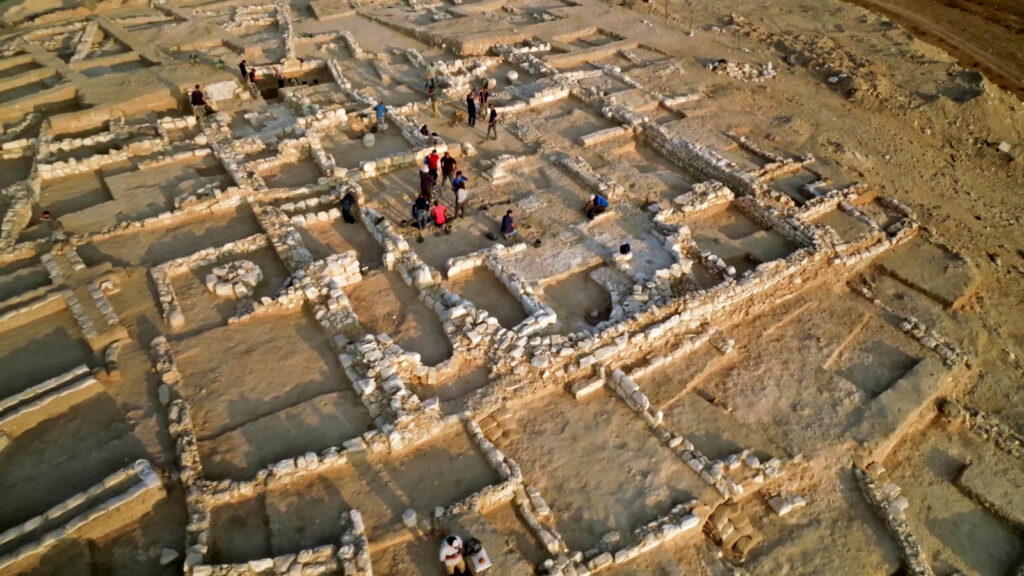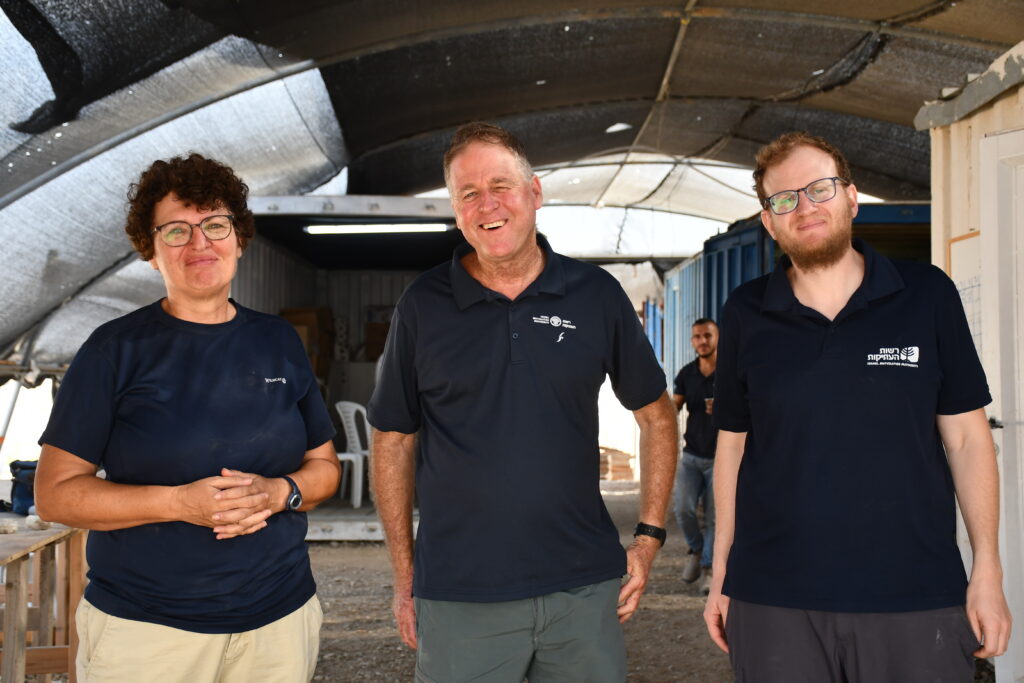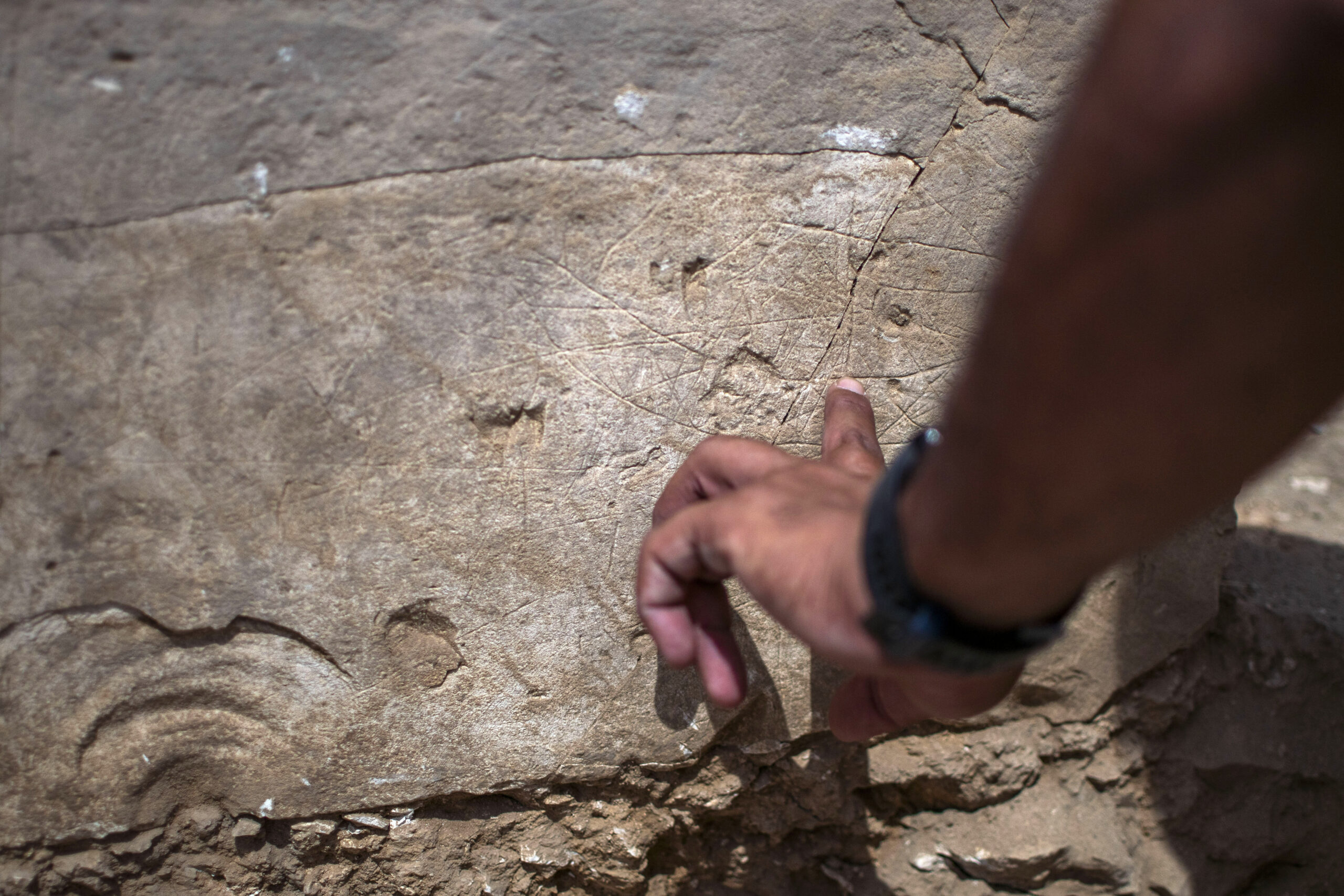Excavations carried out by the Israel Antiquities Authority Excavations (IAA) revealed 1500-year-old church walls displaying contemporary ships.
The excavators explained, “These intriguing drawings may have been left by Christian pilgrims arriving by ship to the Gaza port – their first inland stop was this Rahat church; continuing from here on to other sites throughout the country.”

Ship drawings discovered in the Rahat excavation. Photo: Yoli Schwartz, Israel Antiquities Authority
These finds will be displayed for the first time in the Rahat Conference, held Tuesday June 4, in the Rahat Municipal Cultural Hall. The public is invited.

The excavation of the Israel Antiquities Authority in Rahat. Photo: Yoli Schwartz, Israel Antiquities Authority
A Byzantine-period church with wall art displaying ships was found in the IAA excavation in the Northern Negev. The discovery was made to the south of Rahat in the context of a city expansion project to add a new neighborhood for the Bedouin city and suburban residents, funded by the Authority for Development and Settlement of the Bedouin in the Negev. The IAA has been conducting excavations here for several years. This discovery will be presented to the public for the first time at the Rahat Conference on Tuesday, June 6, displaying the city and region’s history uncovered in these excavations.

The excavation of the Israel Antiquities Authority in Rahat. Photo: Yoli Schwartz, Israel Antiquities Authority
“This is a greeting from Christian pilgrims arriving by ship to Gaza port,” say Excavation Directors Oren Shmueli, Dr Elena Kogan-Zehavi and Dr Noé David Michael on behalf of the IAA, together with Prof. Deborah Cvikel of the University of Haifa’s Department of Maritime Civilizations. “The excavated site tells the story of settlement in the Northern Negev at the end of the Byzantine period and in the beginning of the Early Islamic period. Pilgrims visited the church and left their personal mark in the form of ship drawings on its walls. The ship is indeed an old Christian symbol, but in this case— apparently, it is a true graphical depiction of real ships in which the pilgrims traveled to the Holy Land.” The site of the ancient church with the ship drawings is indeed adjacent to an ancient Roman road that led from the Mediterranean coastal port of Gaza to Beer Sheva, the Negev’s main city. “The pilgrims began their pilgrimage following Roman roads leading to sites sacred to Christendom, such as Jerusalem, Bethlehem, the monasteries in the Negev Hills, and the Sinai “It is reasonable that their first stop after alighting from the ships in Gaza port was this very church revealed in our excavations south of Rahat. This site lies only a half-day’s walk from the port,” say the scholars.

From right to left – Dr. Noé David Michael, Oren Shmueli and Dr. Elena Kogan Zehavi – excavation direcotrs in Rahat. Photo by Yoli Schwartz, Israel Antiquities Authority

Prof. Debi Zweikel from Haifa University. Photo by Emil Aladjem, Israel Antiquities Authority
According to Prof. Deborah Cvikel of the University of Haifa’s Department of Maritime Civilizations, “One of the ships drawn on the church walls is depicted as a line drawing, but yet it may be discerned that its bow is slightly pointed, and that there are oars on both sides of the vessel. This may be an aerial depiction of the ship, though it seems the artist was attempting a three-dimensional drawing. It may be that the lines below it portray the path beaten by the oars through the water. Ships or crosses left by visiting Christian pilgrims as witness to their visit are found also in Jerusalem’s Holy Sepulchre church. “
Another drawing depicts what is apparently a two-masted ship. The main mast has no sail, but seems to show a small flag in its upper section. The fore mast is slightly raked towards the bow and bears a sail known as an artemon. The exacting detail indicates the artist’s familiarity with maritime life. “since the drawing was found upside-down, it seems the person placing the stone during construction was either unaware it bore a drawing, or did not care.
IAA Director Eli Escusido said, “This surprising and intriguing find of ship drawings in a Northern Negev Byzantine-period church opens a window for us to the world of Christian pilgrims visiting the Holy Land 1500 years ago, and provides first-hand evidence about the ships they traveled in and the maritime world of that time. I invite all archaeology lovers to the Rahat Conference in early June, where many finds found in Israel Antiquities Authority excavations in the city will be on view for the public.”
The Rahat Conference is open to the public free of charge and will be held on June 6, 2024. For details, please go to the Israel Antiquities Authority website here.




